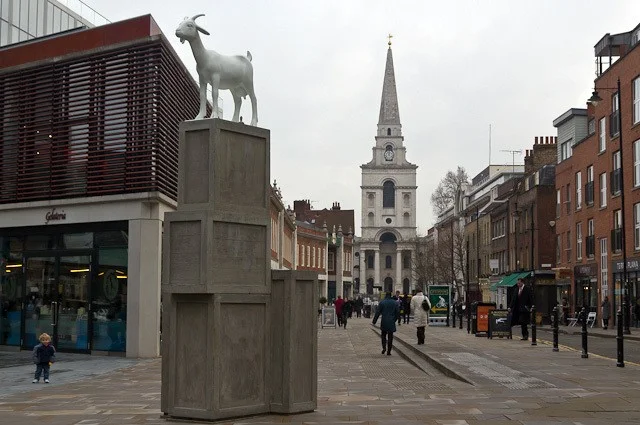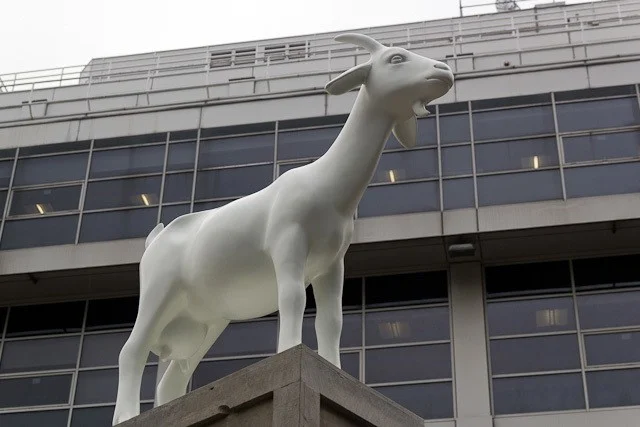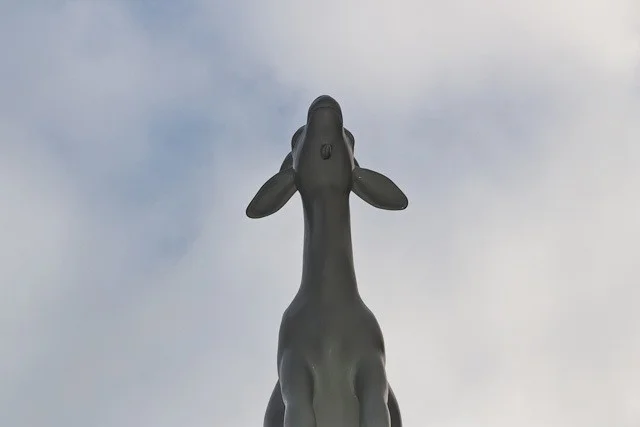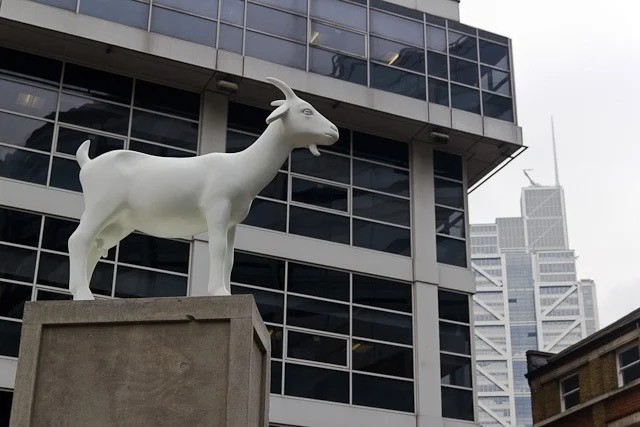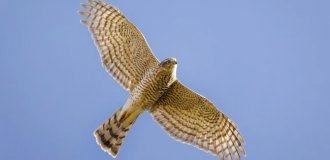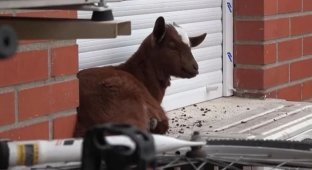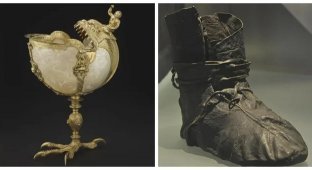Majestic historical Goat and the reasons for its appearance (9 photos)
The majestic goat at Spitalfields Market is considered a monument to the area's migrant population, but most people believe it's just a goat. 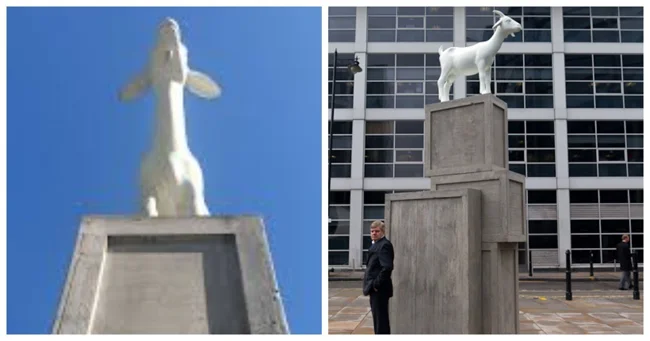
Not far from Liverpool Street Station in Spitalfields stands a graceful, bearded lady. Perched on a stack of concrete boxes, she watches the hurrying bankers and lawyers, listens to the buskers in the square and the ringing of the bells of Christ Church behind her. The lady is a sculpture of a goat. 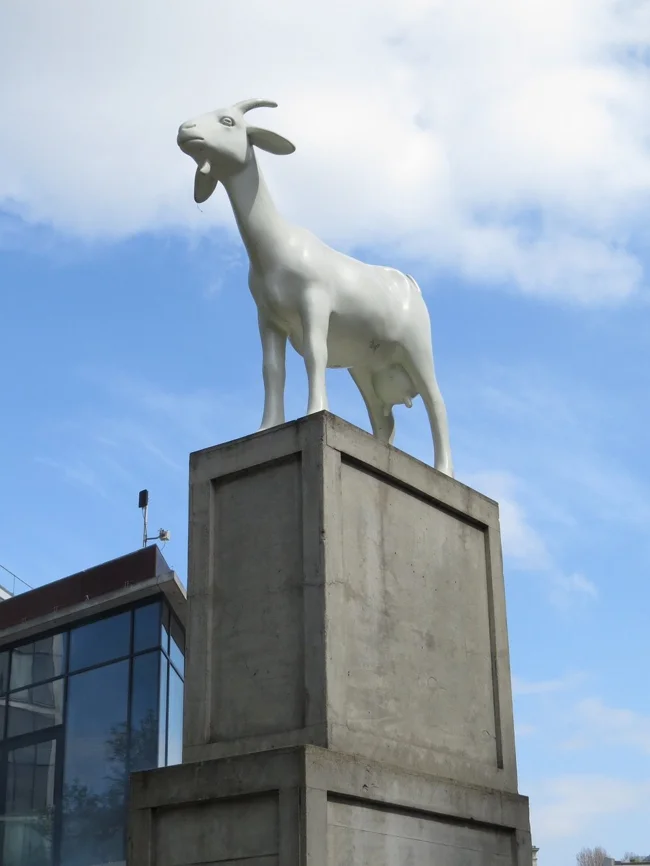
The goat is the work of Kenny Hunter, and was unveiled in 2011. The aluminium animal stands proudly atop a tall stack of crates. Today it remains the only horned creature in the area, but back in 1638, when King Charles I granted a licence for meat, poultry and vegetable vendors to trade on the site, Spittle Fields was a bustling marketplace on the outskirts of London. The market buildings, built by Robert Horner in 1893, still stand and now house restaurants and shops, although the fruit and vegetable market was moved further east to Leeton in 1991. 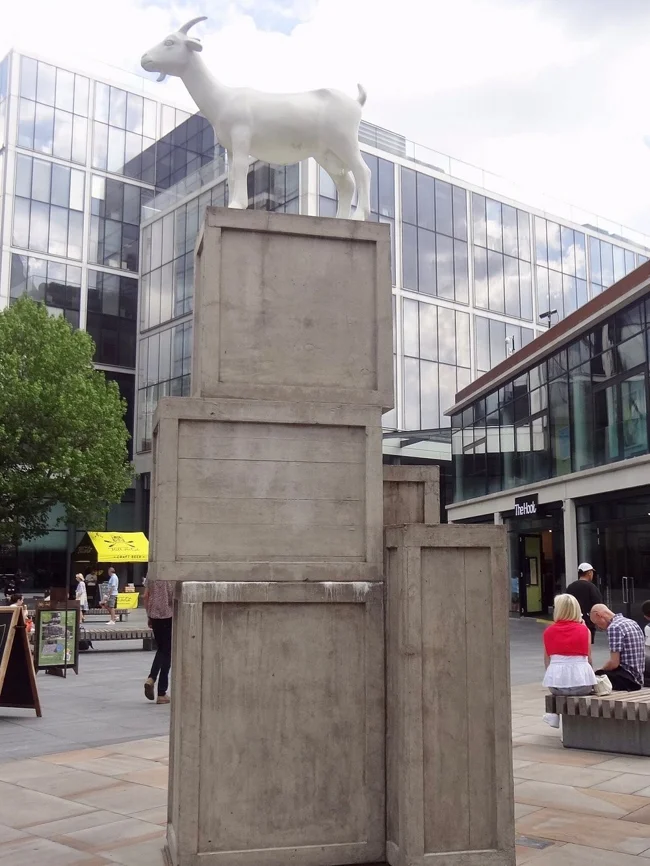
According to Hunter himself, the goat is less about its "hoofed ancestors" and more about "the various waves of migration that have found refuge in Spitalfields and helped shape the area. The goat, as an image of persecution and victimhood, reflects how each successive group of immigrants faced their own combination of conflict, oppression and poverty before eventually finding a new home in London." 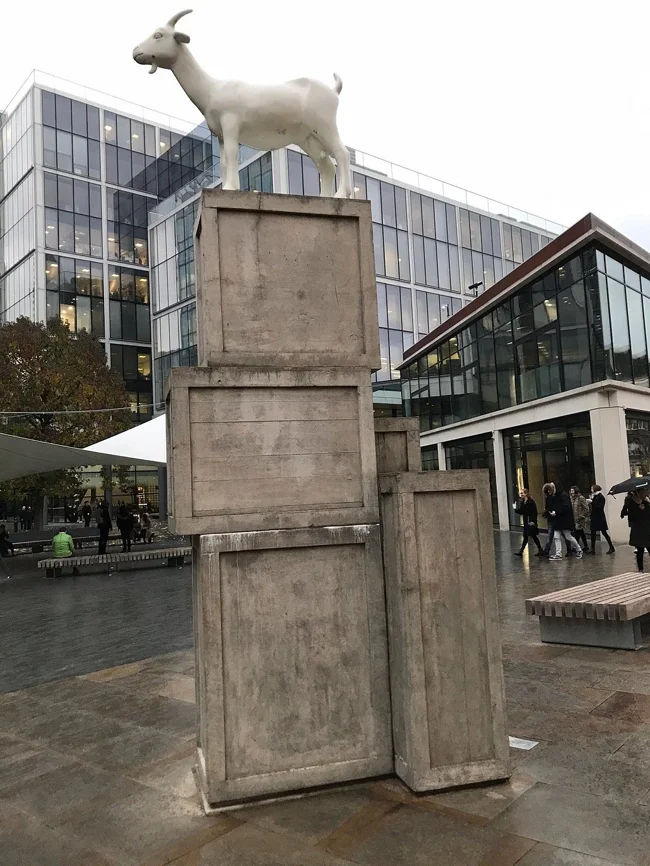
The first to arrive were the Huguenot silk merchants who fled France in the 18th century, and their fine Georgian townhouses remain on several cobbled streets around the market. If you take away the road markings and cars, it's possible to imagine Queen Anne still on the throne. 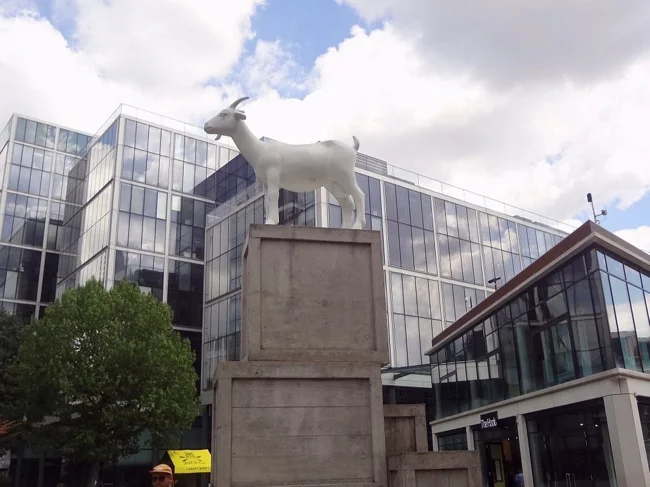
They were followed by Jewish immigrants fleeing hardship in Europe, who set up a famous bagel bakery on Brick Lane, where you can buy bagels 24 hours a day. As a culmination of this culinary fusion, Bangladeshi communities emerged in the 1970s and opened Indian restaurants that continue to thrive to this day. To the delight of the proud hoofed beauty, goat meat is almost never on the menu. 